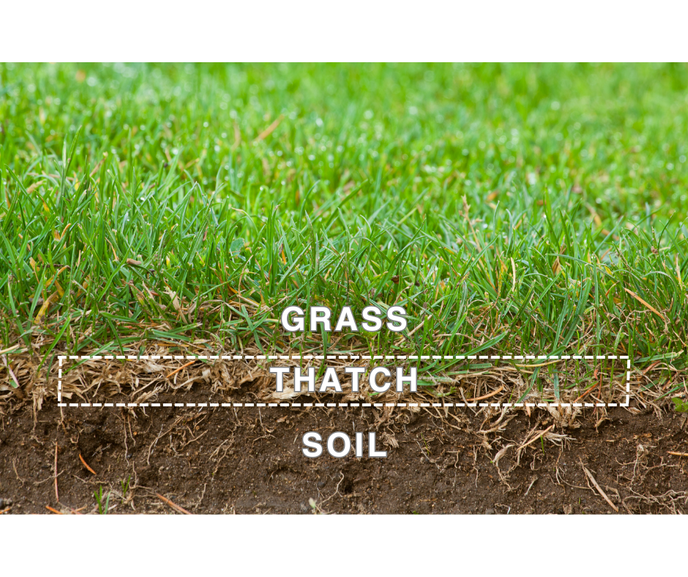|
What is Thatch?
Thatch is the natural accumulation of organic debris, such as grass clippings and leaves, situated between the grass roots of your lawn and the soil. Over time, a mixture of deceased and living plant material builds up around the grass roots. Understanding the distinction between the advantages of a thin thatch layer and the drawbacks of a thick one is crucial, along with knowing how to address the issue when necessary. Advantages of a Healthy Thatch Layer: A thin layer of thatch, measuring less than half an inch, offers positive benefits to your lawn. It functions as organic mulch, preserving soil moisture and shielding against fluctuations in soil temperature. Additionally, it facilitates the penetration of nutrients, water, and air into the soil, fostering the growth of the grass. Disadvantages of Excessive Thatch: When the layer of thatch becomes too thick, its benefits diminish. At this point, the dense barrier of organic material acts as an obstruction to essential nutrients. Water, sunlight, air, and fertilizer are impeded from reaching the soil, hindering the effectiveness of your lawn care efforts. It becomes necessary to address this issue by dethatching your lawn to restore optimal conditions for the grass roots. What is Dethatching? Essentially, dethatching can be likened to an intensive and potent form of lawn raking, and proves to be an effective technique for eliminating surplus thatch. The primary goal is to facilitate the passage of nutrients, air, and water to reach the soil. Does West Metro Lawn & Snow offer Dethatching? Yes! Visit our contact page to request an estimate today! Comments are closed.
|
Details
Chris HalvorsonArchives
July 2024
Categories
All
|


 RSS Feed
RSS Feed


